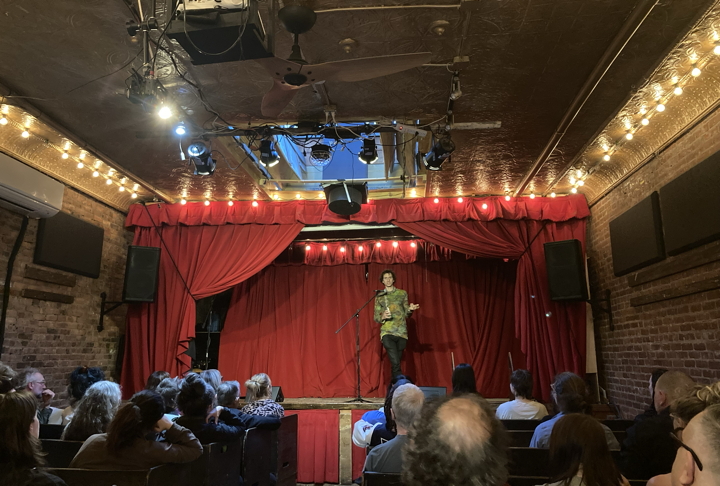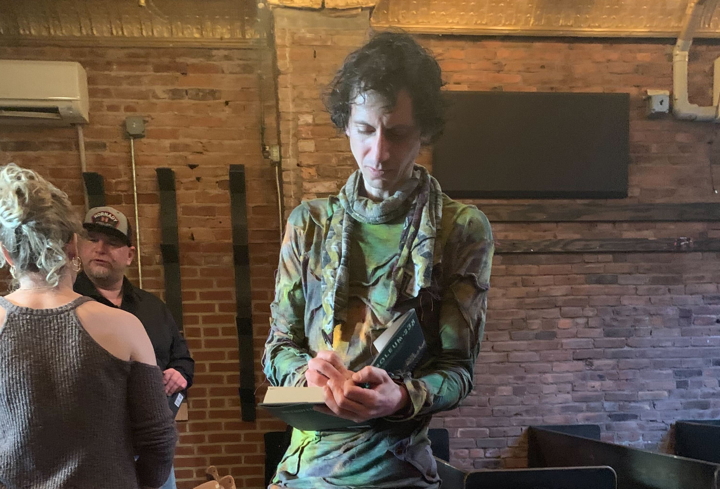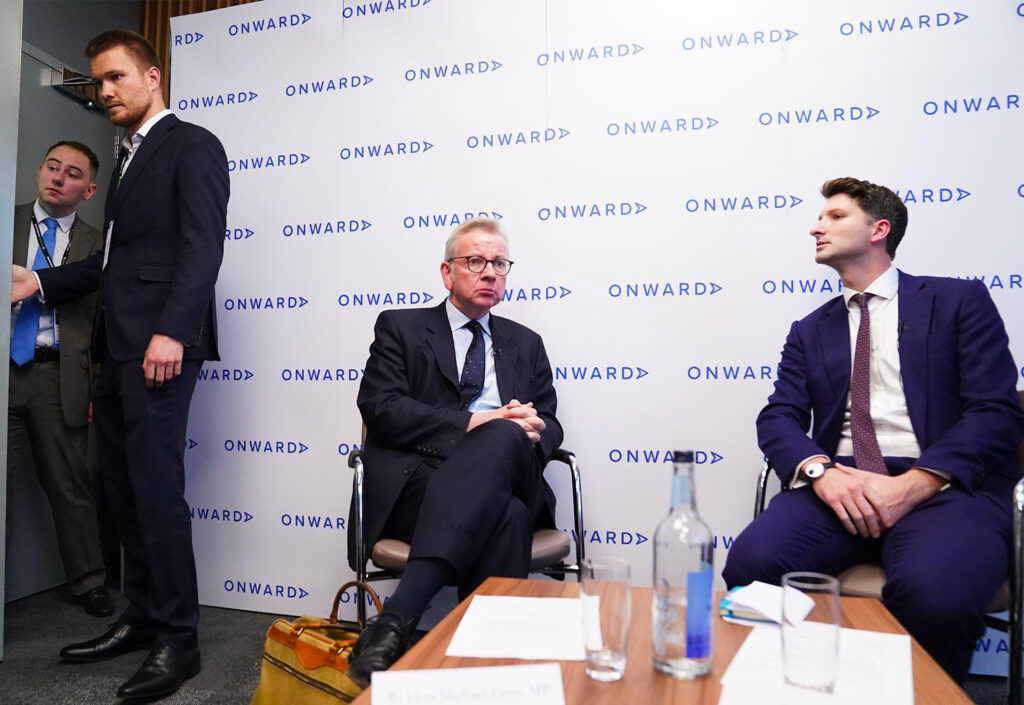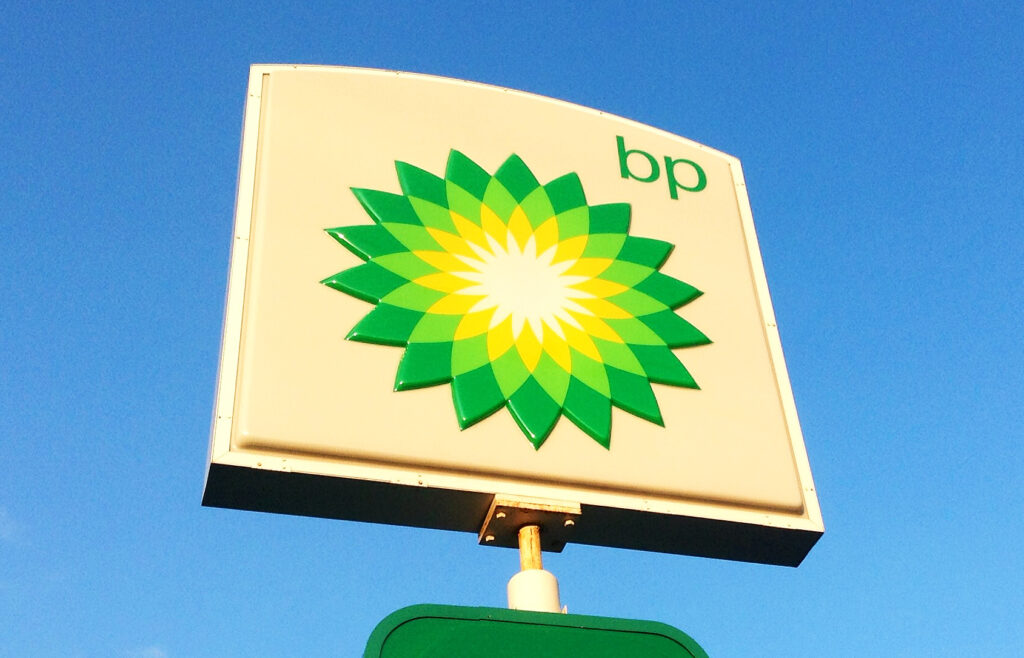Of all the things that come to mind when you think of oil and gas fracking, radioactive cancer-causing sludge may not necessarily be at the top of the list. But award-winning investigative DeSmog journalist Justin Nobel is working to change that with his new book Petroleum-238, which exposes an unsettling secret at the heart of the industry (read an excerpt here). Oil and gas companies across the U.S. are producing billions of gallons of radioactive waste each day, and it’s ending up in municipal landfills, local drinking water supplies, and the bloodstreams of industry workers and their families.
Shockingly, he found, radiation levels at some oil and gas facilities within small American towns are higher than those at the exclusion zone around the site of the 1986 Chernobyl nuclear disaster.
Nobel officially launched Petroleum-238 at the Jalopy Theatre in Brooklyn in late April, an event that featured dark comedy from the likes of “Dr. Frackenstein,” as well as somber but inspiring stories from people who’ve experienced fracking pollution firsthand in their communities, and decided to fight back against the industry.
DeSmog caught up with Nobel after the event to learn more about the secret radioactive history of oil and gas, hazardous waste zones located just down the road from high schools, and why he decided to release the book independently after a notorious private equity investor involved in fracking purchased his original publisher.
The conversation has been edited slightly for brevity and accuracy.
Geoff Dembicki:
I’ve been reporting on oil and gas for a long time and I actually didn’t know much about the industry’s radioactivity until I read your book. Where does this waste come from?
Justin Nobel:
A lot more comes to the surface at an oil and gas well than just the oil and gas. There’s an incredible amount of waste. And the industry’s primary waste stream is this really toxic, salty liquid referred to as “brine” or “produced water.” These are innocent sounding names, but brine can be filled with toxic levels of salt, heavy metals like lead and arsenic, and also the radioactive metal radium. And the U.S. oil and gas industry produces three billion gallons of brine a day. That’s a trillion gallons a year. If you took that waste stream and put it all in standard oil barrels, which are about waist high, and then stacked them atop one another, it would reach the moon and back nearly 28 times.
GD: So what does the industry do with all this waste?
JN: Really the only way the industry can operate at profit is to dispose of that waste stream as cheaply and swiftly as possible. And so, initially that meant discharging it right into creeks or unlined pits or fields. Now it involves what are known as injection wells, where the waste is buried underground. But the waste has to be transported there in trucks, sometimes through communities. Because brine has so much sediment, this material will settle at the bottom of any tanker truck that holds brine as a sludge, and this sludge can be vastly more radioactive than the brine itself. That poses all sorts of hazards for the workers who are regularly interacting with it.
GD: Can you paint a picture of a community that’s really had to bear the brunt of all this radioactive waste?
JN: One community I’ve written about a number of times is Martins Ferry, Ohio. It’s right on the Ohio River. Fracking waste operators set up operations in an old steel mill. The community didn’t know what was happening in this facility. So this company, Austin Master Services, was taking in radioactive oilfield sludge and other radioactive oil items and workers were trying to process it. This facility was just down the street from the Martins Ferry High School football stadium. And in the other direction, you had the community’s water wells. I learned that state inspectors, when they’d visited, had seen trucks carrying fracking waste just spilling out onto the road. They noted that the facility had leaks in it, so it was constantly filling up with rainwater, and rainwater was mixing with fracking waste and spreading it across the facility.
The facility was reliant on this horrible practice of hiring workers fresh out of prison who were desperate for work. Often they were addicted to drugs. They were not informed that the waste is radioactive. They were not appropriately protected against it. They were getting completely covered in sludge, often having to take those clothes home to the washing machine or whatever local hotel they were staying at.

GD: Are there any other communities that stick out for you?
JN: There’s a waste site in northern West Virginia, an old abandoned industrial facility, and it had become a spot where teens were partying. When we took samples there, we found out that levels of radioactivity were higher than 99 percent of the Chernobyl exclusion zone.
GD: It might seem like an obvious question, but can you explain why being exposed to all this radioactivity is harmful to the human body?
JN: Workers are breathing in dust that contains radioactive elements, or they’re working in a sloppy environment and they’re getting covered in radioactive sludge. They’re not wearing appropriate protection. They’re smoking a cigarette and then bringing dirty fingers to their mouths. They’re accidentally ingesting these particles. When these radioactive elements decay inside the body they send off a blast of radiation, often in the intimate space of organs like the lungs or the gut, or maybe the bones and the bloodstream.
Workers can experience breathing difficulties. They could be losing teeth. I spoke to one person who worked at a facility called Fairmont Drive who suffers from lots of health issues. Two of their co-workers have passed away from cancer, an aggressive form of brain cancer and stomach cancer.
The issue with the type of cancers that we would expect in these situations is they often take five to 10 years to develop, and it can be very hard to track workers through that timespan, and then start to make more rigorous connections to their workplace.
It takes time and it takes effort to make that science happen. But it is there waiting. And I think if there’s more attention to it, you’ll have more researchers on it. You have more policy people caring about it. And it will be a new wave of scrutiny that the industry has to deal with.
GD: Originally this book was going to be published with Simon & Schuster, the famous New York City publishing house, but instead you’ve decided to release it independently—how come?
JN: I was initially really excited about publishing with Simon & Schuster. It’s a big name publisher. Last summer, it was announced that Simon & Schuster would be sold to the company KKR. And as I looked into KKR, I learned that it’s a really notorious private equity company. They have significant holdings in oil and gas and have actually founded their own oil and gas company and are involved in a number of plays out west. And this meant that inherently, they had oil waste and radioactive waste somewhere in their operations.
There’s a number of reasons why that’s morally problematic. It’s the situation of trying to sell a book that is a critique of this industry, and now the book has become part of the industry because the publisher’s owners are part of the industry. So we pulled the book from Simon & Schuster and my girlfriend and I started our own publishing house. We just did it ourselves and are printing the book with a distribution company that distributes books all across the country. That makes it really easy for bookstores and libraries and anyone else to get the book.
GD: Now that you’ve spent years reporting on this, what do you see as one of the big-picture takeaways about radioactive fracking waste?
JN: I think that this issue provides an incredibly powerful way to hold the oil and gas industry accountable. That’s because the industry has to someday truly face up to all the waste they create and the risks it poses to workers, the communities, and the environment. If that happens, they will crumble.
They will not be able to survive that scrutiny, because it flips a narrative that they have been able to successfully manipulate, which is that their industry’s harms are just things drummed up by environmental activists, and really not as significant as all the goods the industry brings. But in reality, the harms fall most directly on their own workers, and the communities those workers live in. When it comes to the dangers of this waste, we’ve all been manipulated and deceived.
Subscribe to our newsletter
Stay up to date with DeSmog news and alerts







